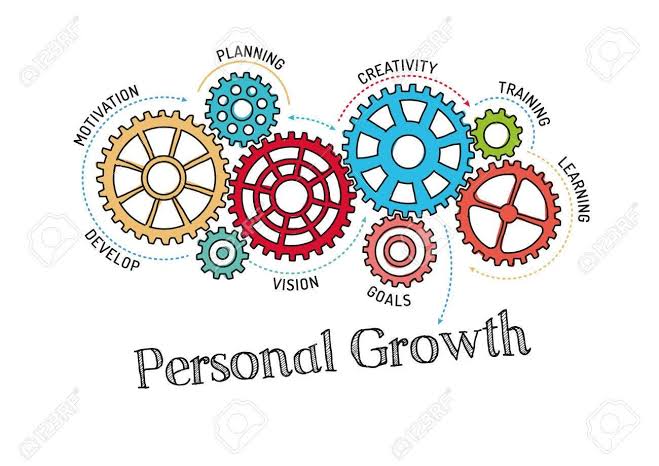Maximizing your potential is a lifelong journey that involves deliberate planning, consistent effort, and self-reflection. In today’s fast-paced and competitive world, personal growth is no longer optional—it is essential for achieving both professional success and personal fulfillment. A personal growth plan serves as a structured roadmap that helps you identify your strengths, address weaknesses, set meaningful goals, and track progress. As of 2025, adopting a personalized development strategy is one of the most effective ways to unlock your true capabilities.
Understanding Personal Growth Plans
A personal growth plan is a structured approach to self-improvement that focuses on enhancing skills, expanding knowledge, and nurturing personal well-being. Unlike general resolutions, growth plans provide a step-by-step framework that aligns with long-term ambitions and short-term objectives.
Key elements of an effective personal growth plan include:
- Self-Assessment: Evaluating your current abilities, strengths, and areas for improvement.
- Goal Setting: Establishing clear, measurable, and realistic goals aligned with your values.
- Action Steps: Outlining daily, weekly, or monthly actions that move you toward your objectives.
- Progress Tracking: Monitoring achievements and adjusting strategies based on performance.
- Reflection and Adaptation: Continuously reviewing and refining the plan as you grow.
By clearly defining what you want to achieve and how to get there, personal growth plans prevent aimless effort and maximize productivity.
Identifying Strengths and Weaknesses
The first step in any personal growth journey is self-awareness. Understanding your natural strengths allows you to leverage them for success, while identifying weaknesses helps you develop strategies for improvement.
To assess your strengths and weaknesses:
- Conduct a SWOT Analysis (Strengths, Weaknesses, Opportunities, Threats) on yourself
- Seek feedback from mentors, colleagues, or peers
- Reflect on past successes and challenges to identify patterns
- Use personality and skills assessments to gain objective insights
This self-knowledge serves as the foundation for creating a growth plan that truly fits your personal and professional aspirations.
Setting SMART Goals for Growth
Effective personal growth requires clear, actionable goals. The SMART framework—Specific, Measurable, Achievable, Relevant, and Time-bound—helps turn ambitions into structured objectives.
Examples of SMART goals include:
- Learning a new software tool within three months to enhance career skills
- Reading one personal development book per month for the next year
- Exercising four times a week to improve health and energy levels
- Completing an online certification to advance professional qualifications
Clear goals give your growth plan direction and motivation, helping you stay focused even when challenges arise.
Developing Actionable Steps
Once goals are defined, breaking them into manageable action steps makes them less overwhelming and more achievable. Daily or weekly actions create consistency, which is critical for long-term growth.
Examples of actionable steps include:
- Setting aside 30 minutes daily for skill practice or learning
- Allocating weekly reflection sessions to track progress
- Networking with industry professionals to expand opportunities
- Practicing mindfulness or journaling to improve emotional resilience
Small, consistent actions compound over time, leading to significant personal transformation.
Leveraging Tools and Resources
In 2025, numerous tools and resources are available to support personal growth plans, from mobile apps to AI-driven platforms. Leveraging these tools can help organize tasks, track progress, and provide learning opportunities.
Useful resources include:
- Goal Tracking Apps like Notion, Trello, or Habitica for visual progress monitoring
- E-Learning Platforms such as Coursera, Udemy, or LinkedIn Learning for skill development
- Productivity Tools like calendar apps, time blockers, and focus timers
- Mentorship and Coaching Programs for guidance and accountability
By combining digital tools with consistent effort, you can streamline your personal growth journey.
The Importance of Reflection and Adaptation
A personal growth plan is not static—it evolves as you progress and your priorities shift. Regular reflection allows you to celebrate milestones, identify obstacles, and refine your approach.
Ways to incorporate reflection include:
- Weekly or monthly self-assessments of progress toward your goals
- Journaling to track achievements and lessons learned
- Evaluating which strategies are working and which need adjustment
- Updating goals based on new opportunities or life changes
Reflection ensures that your growth plan remains relevant and effective, keeping you on a steady path toward your full potential.
Balancing Personal and Professional Growth
Personal growth plans should cover both professional and personal aspects of life to ensure well-rounded development. Focusing solely on career goals without nurturing physical health, mental well-being, or personal interests can lead to burnout.
Consider including these areas in your growth plan:
- Career Development: Skills, certifications, and networking
- Health and Wellness: Exercise, nutrition, and mindfulness practices
- Relationships and Social Life: Building meaningful connections and support networks
- Personal Interests: Pursuing hobbies and creative outlets for balance
A balanced plan not only maximizes potential but also enhances overall quality of life.
Conclusion
Maximizing your potential through a personal growth plan involves self-awareness, structured goal-setting, consistent action, and regular reflection. By leveraging modern tools, breaking goals into actionable steps, and maintaining balance between professional and personal development, you can create a roadmap for lasting success. In the evolving world of 2025, those who commit to continuous growth are best positioned to unlock their full potential and thrive in all aspects of life.



